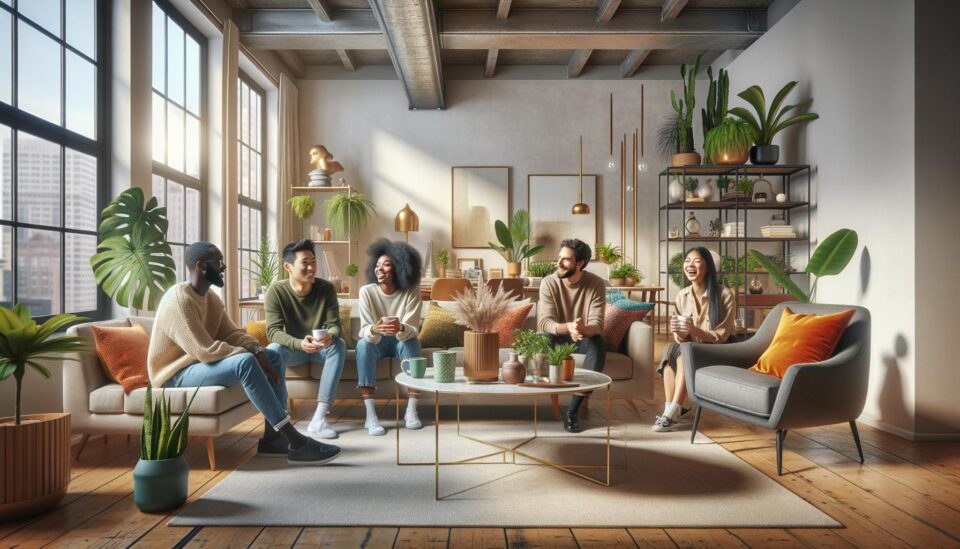At Global Positive News Network, we believe in the power of our surroundings to shape our mood and well-being.
Your living room is more than just a space; it’s a sanctuary that can uplift your spirits and energize your daily life.
Creating a positive energy living room isn’t just about aesthetics-it’s about crafting an environment that nurtures your happiness and promotes overall wellness.
How Your Living Space Shapes Your Well-Being
The Power of Your Surroundings
Your living room is more than just a place to relax; it actively influences your mood and well-being. Research from the Journal of Environmental Psychology confirms that our surroundings significantly impact our mental state. Dr. Sally Augustin’s study revealed that people who described their homes as restorative had 5.6 times lower levels of cortisol (the stress hormone) compared to those who didn’t.
Ancient Wisdom for Modern Homes
Feng shui, the ancient Chinese practice of harmonizing individuals with their surroundings, has been the subject of empirical and quantitative studies. Recent research has identified existing studies and directions for further research in this field.
Tangible Benefits of a Positive Energy Space
Creating a positive energy living room isn’t just about feeling good-it can have concrete benefits. A survey by the National Association of Realtors found that 83% of buyers’ agents said staging a home made it easier for buyers to visualize the property as their future home. This demonstrates how a well-designed space can significantly influence perceptions and decisions.
Practical Steps to Enhance Your Living Room’s Energy
- Declutter Regularly: A study in the Personality and Social Psychology Bulletin revealed that women who described their homes as cluttered had higher levels of depressed mood over the day.
- Incorporate Natural Elements: Research from the University of Technology, Sydney found that adding plants to office spaces reduced tension and anxiety by 37%, depression by 58%, and fatigue by 38%.
- Optimize Lighting: A study published in the Journal of Clinical Sleep Medicine showed that exposure to natural light during the day can improve sleep quality and duration by up to 46 minutes per night.
The Impact of Color and Texture
The colors and textures you choose for your living room can dramatically affect your mood. Cool colors (like blues and greens) tend to promote relaxation, while warm colors (such as reds and oranges) can energize a space. Textures add depth and interest to a room, creating a more inviting atmosphere. Try incorporating a mix of smooth and rough textures (through pillows, rugs, and wall hangings) to create a balanced sensory experience.
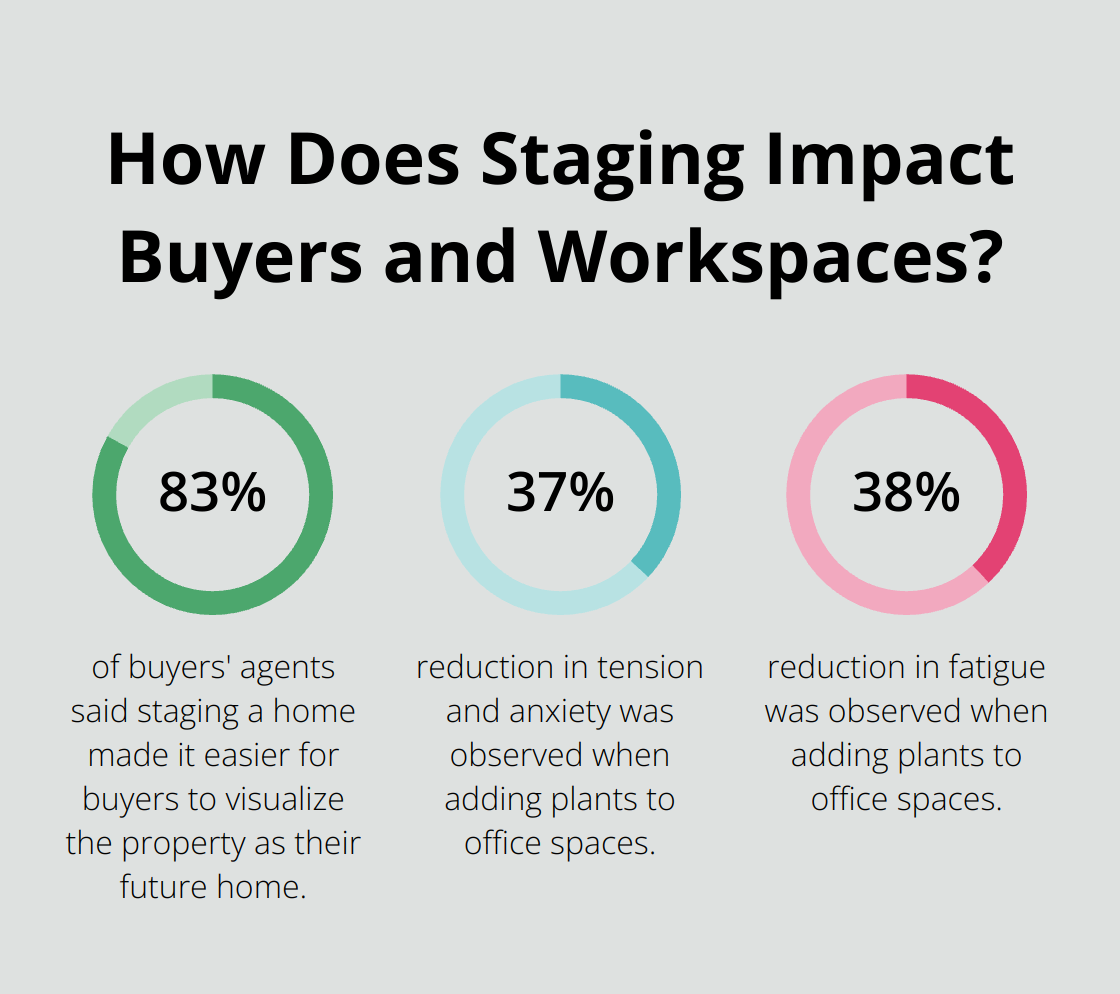
As we move forward, we’ll explore how to use color psychology and lighting to further enhance the positive energy in your living room. These elements play a crucial role in creating a space that not only looks good but feels good too.
How Colors and Light Transform Your Living Room
The Science of Color Psychology
Color psychology isn’t just a theory-it’s backed by science. A study found that blue interior color was considered to promote and facilitate studying activity more than lighter and warmer colors (such as orange and red). This doesn’t mean you should paint your entire living room blue, but you can incorporate calming blues in your decor to create a serene atmosphere.
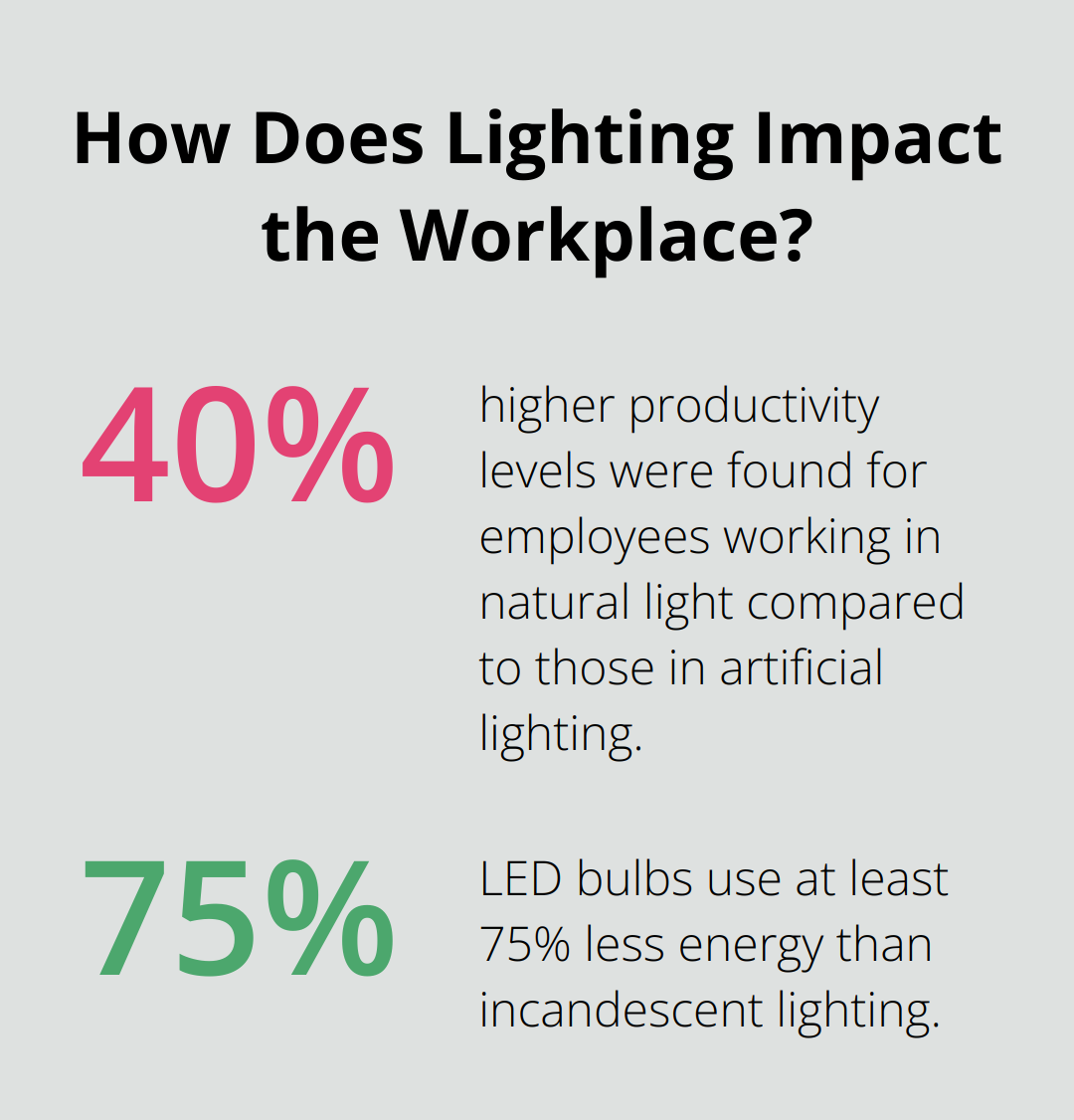
For a burst of energy, consider adding pops of yellow. Research from the University of Manchester found that yellow is associated with happiness and can stimulate mental activity. A yellow throw pillow or artwork can instantly brighten your space and mood.
Green, reminiscent of nature, has shown to enhance creative performance. A study in the Personality and Social Psychology Bulletin revealed that participants exposed to the color green performed better on creative tasks. You can add plants or green accents to boost your creativity at home.
The Power of Natural Light
Natural light changes the ambiance of your living room. A study by the Swiss Federal Institute of Technology found that employees working in natural light had up to 40% higher productivity levels compared to those in artificial lighting.
To maximize natural light, keep your windows clean and unobstructed. Replace heavy curtains with sheer fabrics that allow light to filter through while maintaining privacy. If possible, add skylights or larger windows to flood your space with natural brightness.
For rooms with limited natural light, mirrors can work wonders. Place mirrors strategically to reflect light and make your space feel larger and brighter. A large mirror opposite a window can effectively double the amount of natural light in your room.
Artificial Lighting for Mood Enhancement
When natural light isn’t enough, smart artificial lighting can step in. The American Lighting Association recommends using layered lighting to create a warm and inviting atmosphere. This involves combining ambient, task, and accent lighting.
For ambient lighting, use warm-toned LED bulbs that mimic natural light. These not only save energy but also create a cozy atmosphere. The U.S. Department of Energy reports that LED bulbs use at least 75% less energy and last 25 times longer than incandescent lighting.
Task lighting, such as reading lamps, should adjust to prevent eye strain. The Illuminating Engineering Society suggests that task lighting should be 3 times brighter than ambient lighting for optimal visibility.
Accent lighting can highlight artwork or architectural features, adding depth to your room. Use LED strip lights behind shelving or under cabinets for a subtle glow that adds dimension to your space.
Circadian lighting systems may have the power to positively affect people’s health, alertness, productivity, and more. Cooler tones in the morning can help boost alertness, while warmer tones in the evening promote relaxation. A study in the Journal of Clinical Endocrinology & Metabolism found that exposure to blue light in the evening can disrupt sleep patterns, so consider using warmer tones as bedtime approaches.
Now that we’ve explored how colors and light can transform your living room, let’s move on to discuss how furniture arrangement and decor can further enhance the positive energy in your space.
How to Arrange Your Living Room for Positive Energy
The Art of Furniture Placement
Your furniture arrangement impacts the energy flow in your living room. A University of Minnesota study found that rooms with clear, unobstructed paths feel more spacious and inviting. Create a focal point (such as a fireplace or large window) and arrange seating to face it. This creates a sense of purpose and encourages conversation.
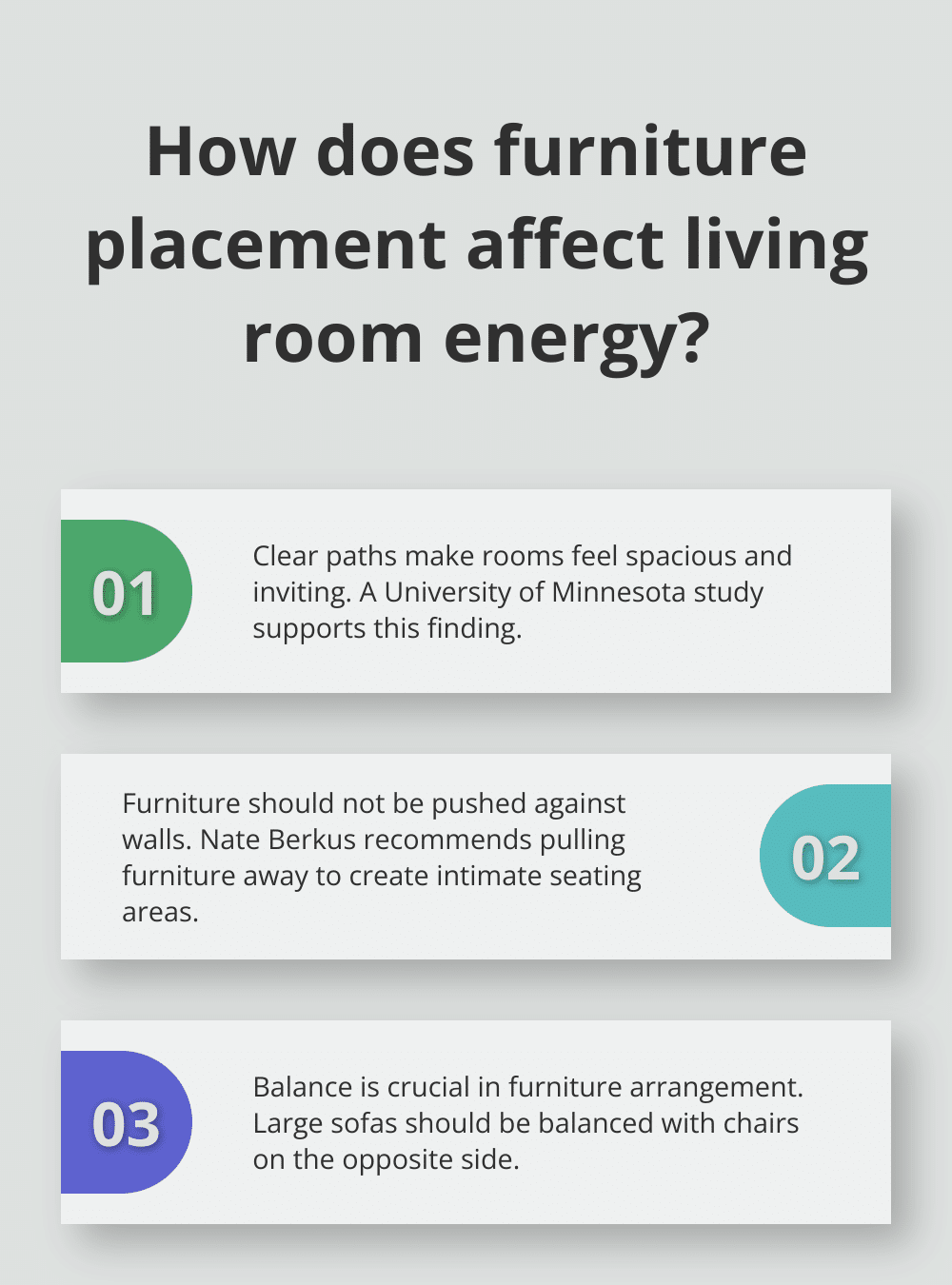
Don’t push all furniture against the walls. Interior design expert Nate Berkus recommends pulling furniture away from walls to create intimate seating areas. This approach makes your space feel cozier and more welcoming. Leave at least 30 inches of walking space between pieces to ensure easy movement.
Balance your furniture arrangement. If you have a large sofa on one side of the room, balance it with two chairs on the opposite side. This creates visual harmony and prevents the space from feeling lopsided.
Bringing Nature Indoors
Natural elements in your living room boost positive energy. Indoor gardening relieves stress, boosts creativity, productivity, and focus, and promotes recovery. There’s some evidence that houseplants may have these positive effects.
Choose low-maintenance plants like snake plants, pothos, or ZZ plants if you’re new to plant care. These varieties purify air effectively and are easy to maintain. For a dramatic effect, consider a large floor plant like a fiddle leaf fig or a bird of paradise.
Incorporate natural materials like wood, stone, or woven baskets to add texture and warmth. A study in the International Journal of Environmental Research and Public Health found that exposure to wooden materials decreases stress levels and promotes overall well-being.
The Power of Positive Artwork
Your choice of artwork influences your living room’s energy. A study in the Journal of Environmental Psychology found that viewing art reduces stress and increases positive emotions. Select pieces that evoke positive emotions and align with your personal values.
Choose uplifting themes like nature scenes, abstract pieces with vibrant colors, or photographs of happy memories. The size of your artwork matters too. Interior designers often recommend the “57” rule: hang artwork so its center is 57-60 inches from the floor, which is generally considered eye level.
Don’t limit yourself to wall art. Sculptural pieces, like a calming water feature or a handcrafted ceramic vase, add visual interest and positive energy. A study in Health Environments Research & Design found that water features in healthcare settings reduced stress and increased feelings of tranquility among patients.
Your living room should reflect your personality and bring you joy. Incorporate items that hold special meaning to you (such as travel souvenirs or family heirlooms). These personal touches make your space unique and contribute to a sense of comfort and positivity.
Final Thoughts
Creating a positive energy living room transforms your space into a sanctuary that nurtures well-being. The strategies we explored combine science, ancient wisdom, and personal touch to enhance your mood and quality of life. Your living room should reflect your unique personality and preferences, so trust your instincts when choosing elements that resonate with you.
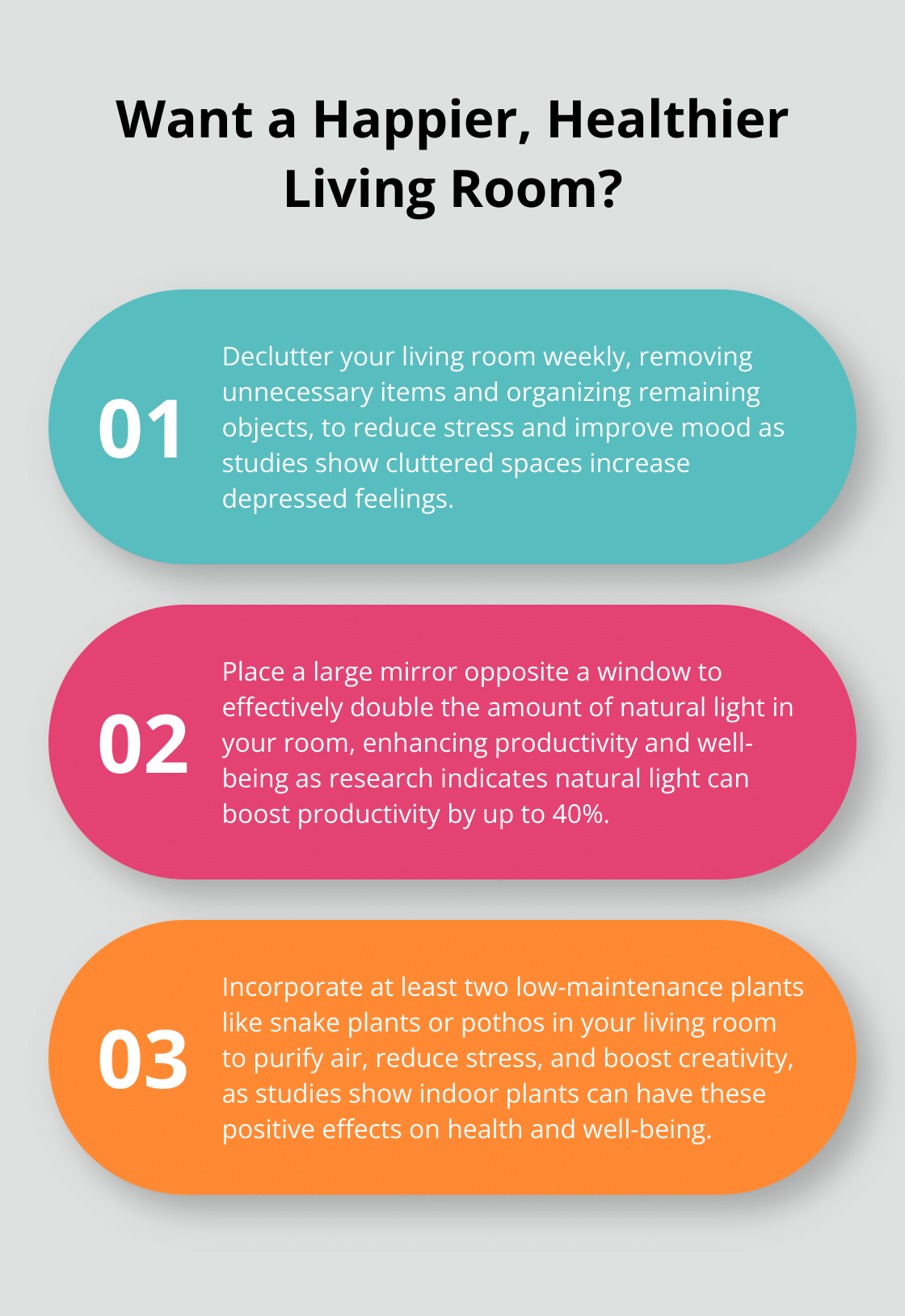
We at Global Positive News Network believe in the power of positivity to transform lives. Your home is your personal sanctuary, and infusing it with positive energy creates a ripple effect that extends to other areas of your life. The process of creating a positive energy living room is ongoing, so enjoy the transformation and be patient with yourself.
Small changes can lead to significant improvements in your daily life. You shape your environment mindfully, cultivating a space that supports your growth, happiness, and overall well-being. Make those changes and watch as your living room becomes a source of joy and positive energy in your life.

